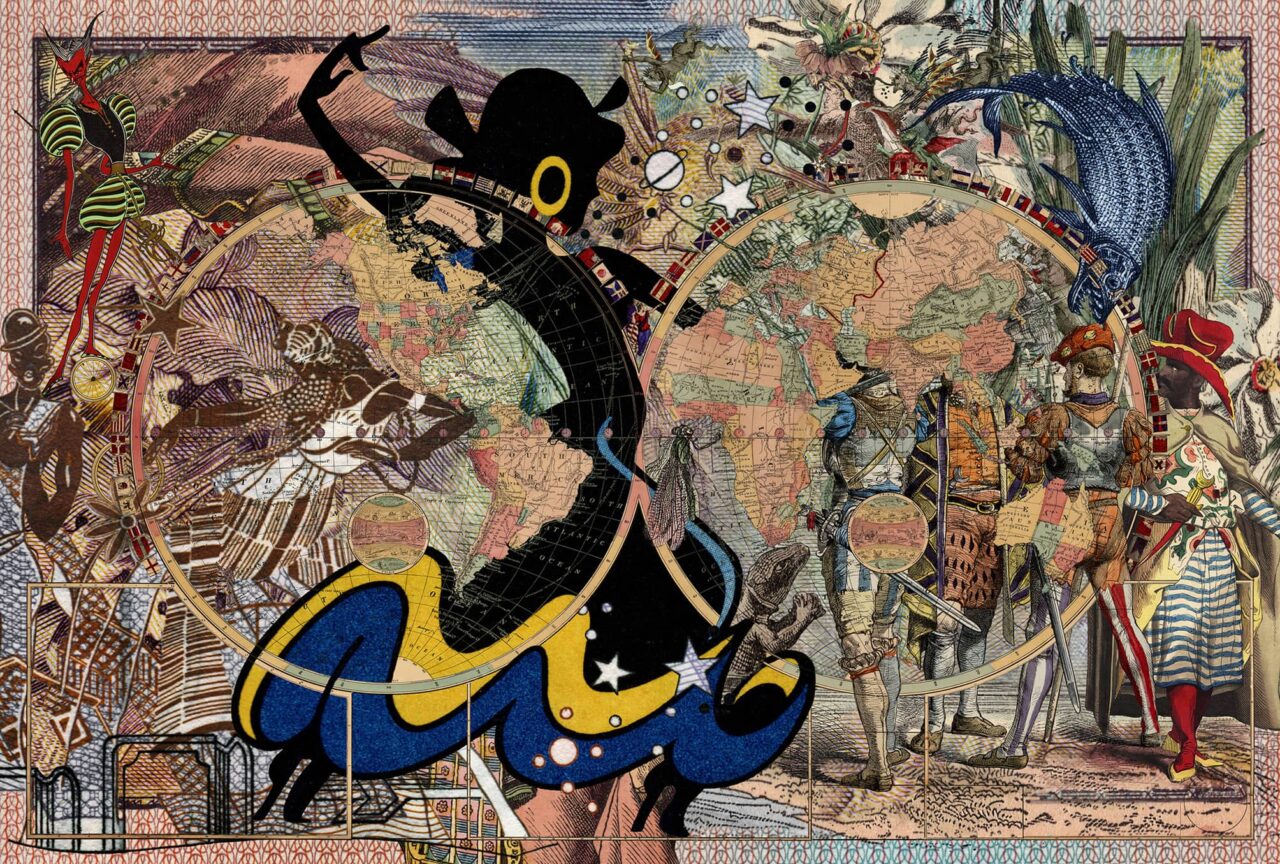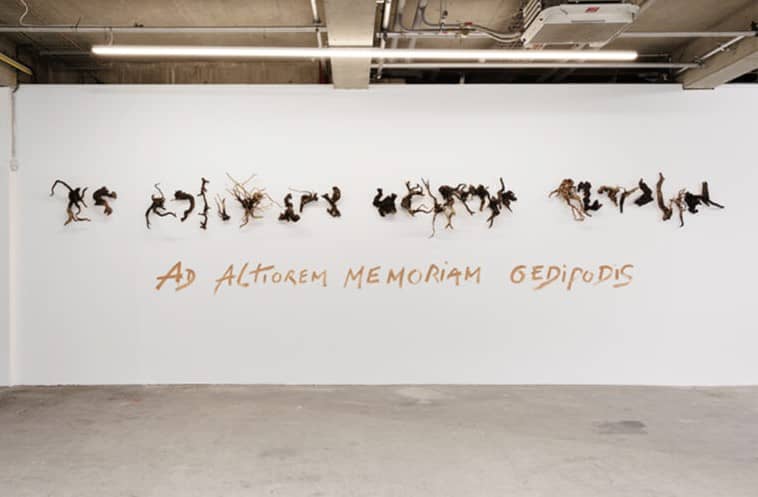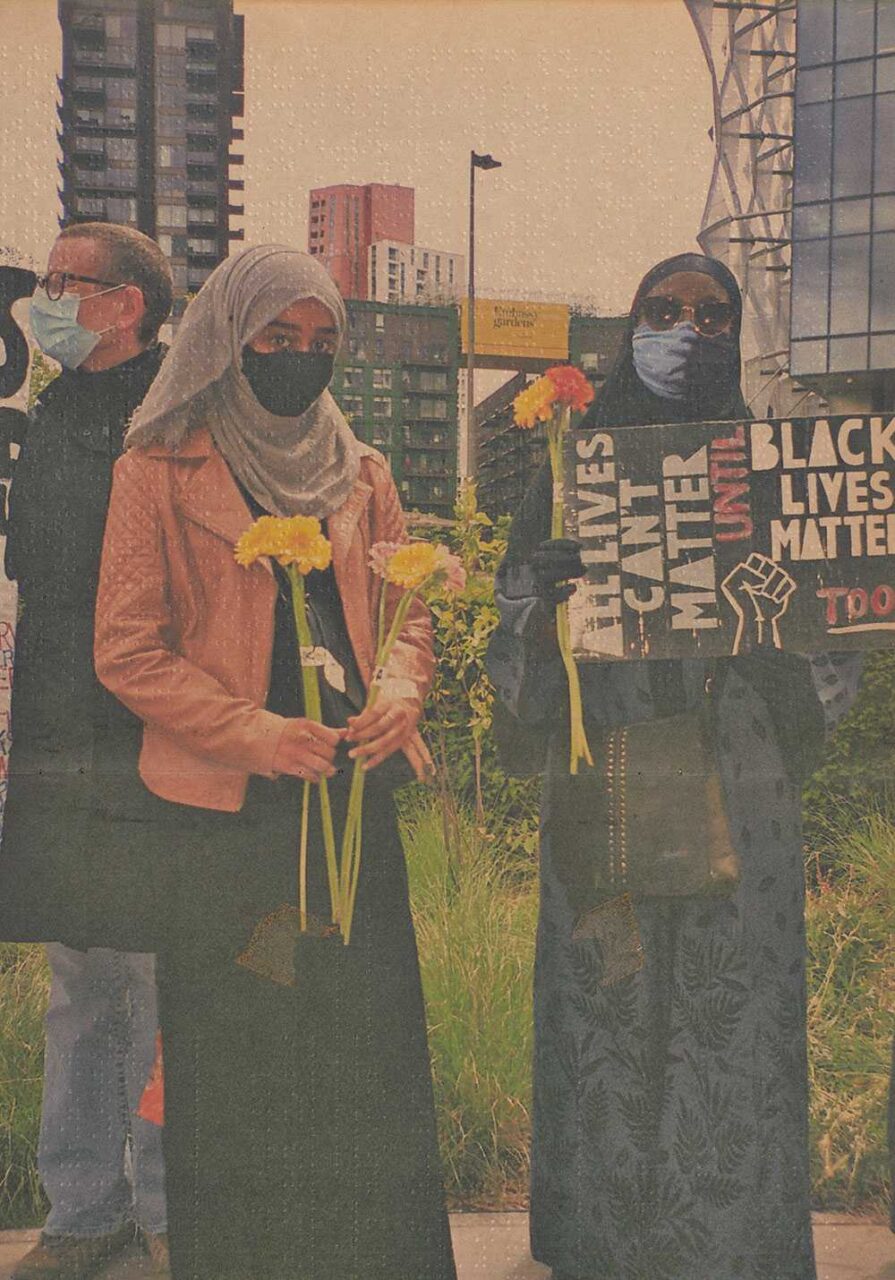Myriam Mihindou, Malala Andrialavidrazana, Barbara Chase Riboud, Iyo Bisseck and a collective of eleven artists under the protective figure of Tituba take the pride place of this new season of exhibition of the Palais de Tokyo (Paris). From October 17th to January 5th, black women narratives are highlighted to tend to our society transgenerational wounds and ancestral scars.
Starting on Thursday, October 17th, the new season of exhibitions of the Palais de Tokyo explores a diversity of forms and arts curated around the need for care. It calls on the transformative power of creation, beauty and poetry in the face of division and chaos. Visions and voices of the past approach the present in a variety of narratives to tend to its wounds. Artists invoke “benevolent ghosts” to care for ancestral bonds, making visible those absent, yet powerful figures.
Six exhibitions start on October 17th, four of them spread light on the brilliant work of some black female artists. Two others are a group show in the context of the Lithuanian cultural season in France entitled Borders are noctural animals / Sienos yra naktiniai gyvūnai and an immersive experience, Stone speakers, created by Julian Charrière based on his recordings of volcanoes from all around the world.
This season of exhibition is completed by a semi-permanent installation of mural paintings by Renée Lévi and an exclusive programme of performances by Pierre Bal Blanc.
Myriam Mihindou, “Praesentia”
Through installation and sculpture, drawing, writing, photography, video and even performances, Myriam Mihindou seeks to heal the individual and collective wounds caused by diverse forms of domination.
The multidisciplinary artist thus embraces the many functions of art: spiritual and therapeutic, social and political. Her work addresses issues of identity and language, memory and ritual, as well as the female condition, living-beings, spirituality and ecology.
This exhibition, co-conceived and co-produced by the CRAC Occitanie in Sète and the Palais de Tokyo in Paris, displays a proficient part of her work plus new productions. Under a polysemous title evoking presence, power and protection, “Praesentia” re-reads dominant narratives and renders visible bodies and voices, practices and imaginaries that have long been neglected or minoritised.
Malala Andrialavidrazana, “Figures”
The light-filled “grande verrière” gallery of the Palais de Tokyo welcomes Malala Andrialavidrazana’s “Figures” reshaped into a 60-metre-long mural installation.
Since 2015, the artist has been developing digital photomontages using images from the 19th and 20th centuries: selected representations drawn from stamps, banknotes, prints, advertisements and others are superimposed over geographical maps to convey the multiple contradictory realities underlying the idea of modernity.

Her work is a place of conflict that brings together maps and images as they are products of mechanisms of knowledge and power. By doing so, Malala Andrialavidrazana questions the birth of globalization by way of colonialism, the expansion of capitalism and the accelerated circulation of goods and images to the detriment of natural resources.
“Tituba, qui pour nous protéger ?” [Tituba, who protects us ?]
Named after the 1986 novel Tituba, Black Witch of Salem by Maryse Condé, this collective exhibition invites eleven artists from France, Great Britain, and North America with Carribean and African diasporic trajectories to propose artworks on the topics of grief, memory, migration and ancestrality.
The eponymous character of Tituba is invoked as a figure of protection while the artists reflect, both in an intimate and a collective way, on the role of spiritual protectors and imaginary friends played on the every day by our lost loved ones, our memories, our myths and dreams.
Artists invited are Naudline Pierre, Adigail Lucien, Rhea Dillon, Miryam Charles, Monika Emmanuelle Kazi, Naomi Lulendo, inès Di Dolco Jemni, Liz Johnson Artur, Tanoa Sasraku, Claire Zaniolo and Massabielle Brun.
Barbara Chase-Riboud, “Quand un noeud est dénoué, un dieu est libéré” [Everytime a knot is undone a god is released]
Between the abstract and the figurative, the visual work of sculptor, draftswoman, poet and novelist, Barbara Chase-Riboud unravels lots of explicit and implicit references to the history of the African diaspora. Her bronzes, textiles and drawings pay a subtile tribute to great figures from the transatlantic slave trade up to the struggle for civil rights in the United States.
Flirting with illegibility and unintelligibility, the exhibition features delicate evocations of her literary oeuvre embroidered on paper with white thread as well as a listening room where multiple voices read her texts and poems. Famous bronze sculptures then round up the selective display of her most recent work at the Palais de Tokyo.
“Quand un noeud est dénoué, un dieu est libéré” is part of a nationwide celebration of her oeuvre, carried by seven Parisian institutions to give Barbara Chase-Ribon a well-deserved recognition in France where she is underrecognized despite having lived and worked here for the past decades, being well-known in the US and considered among the major artists of her time.
Iyo Bisseck at La Friche #3, Digital Commons
Interaction designer and programmer, the multidisciplinary artist Iyo Bisseck is invited, along with four other digital artists and researchers, to the Palais de Tokyo for this season’s edition of La Friche [“The Wilderness”].
Since 2023, La Friche has welcomed artists and collectives into a 250sqm space of work, reflection, production, encounters and calm within the exhibition galleries of the Palais de Tokyo. This year, the program proposes to question the links between art, ecology, politics and digital technologies using the notion of the digital commons as a starting point.
Through immersive digital environments, sculptural installations, moving images and video games, Iyo Bisseck undertakes a critical exploration of the continuities of colonial systems and capitalists logics within digital tools, such as AI. Her work aims to create spaces of care and community while advocating for decolonial and queer causes.
Margaux Labit




